Welcome to our comprehensive guide on caring for Julii Cory Catfish, a popular species of bottom-dwelling catfish in the aquarium hobby. Also known as leopard catfish, these charming creatures are loved by fishkeepers for their unique features and peaceful nature.
Core Insights to Julii Cory Catfish:
Julii Cory Catfish Profile
The Julii Cory catfish is a fascinating species that makes a great addition to any freshwater aquarium. In this section, we will explore the size, lifespan, and breeding habits of the Julii Cory catfish.

Julii Corydoras Size
The Julii Cory catfish can grow up to 2.5 inches in size, making it a relatively small catfish species. Their compact size allows them to thrive in smaller aquariums and makes them a popular choice for aquarists with limited space.
Corydoras Julii Lifespan
The Julii Cory catfish has an average lifespan of around 5 years. With proper care and a suitable environment, these catfish can live for several years, providing enjoyment and companionship in your aquarium.
Julii Corydoras Breeding
Breeding Julii Cory catfish can be a rewarding experience for aquarium enthusiasts. These catfish are egg-layers and can breed in captivity under the right conditions. Creating an ideal breeding environment with ample hiding places and suitable water parameters can encourage successful breeding.
If you’re interested in learning more about the care and requirements of the Julii Cory catfish, continue reading our comprehensive guide.
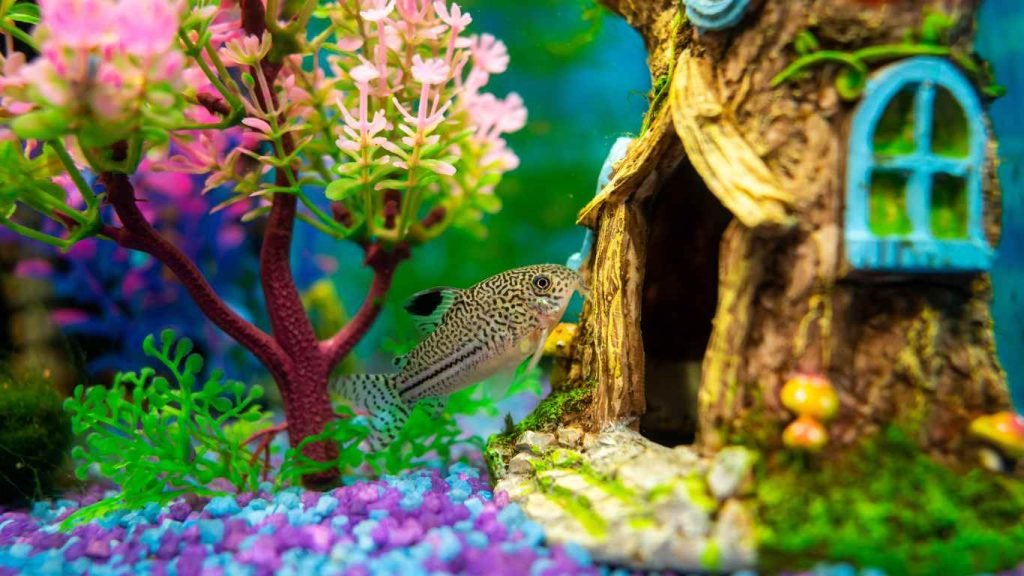
Tank Setup for Julii Cory Catfish
Creating the perfect tank setup for your julii cory catfish is essential for their health and well-being. These peaceful catfish can coexist with other small fish in a community tank. To ensure a comfortable environment, consider the following factors:
- Tank Size: Julii cory catfish require a minimum tank size of 10 gallons, but it’s recommended to provide a larger tank of 20 gallons or more. This will allow enough space for a group of at least six corydoras, as they thrive in the company of their own kind.
- Substrate: Choosing a soft substrate such as sand or fine smooth gravel is best for julii cory catfish. They are bottom-dwelling species and enjoy sifting through the substrate in search of food.
- Decoration: Providing hiding places like driftwood, rocks, and plants is important for julii cory catfish. These decorations simulate their natural habitat and create spaces for them to feel safe and secure.
- Filtration: A proper filtration system is necessary to maintain a clean and healthy tank environment for your julii cory catfish. Use a filter that is suitable for your tank size and make sure to clean or replace the filter media regularly.
- Water Parameters: Julii cory catfish prefer slightly acidic to slightly alkaline water with a pH range of 6.5 to 7.8. They can tolerate a wide range of water hardness up to 20 dGH. The temperature should be kept between 72 to 79 degrees Fahrenheit (22 to 26 degrees Celsius).
When it comes to tank mates, julii cory catfish are compatible with other small catfish and peaceful fish that occupy different areas of the tank. Good tank mates include tetras, danios, rasboras, and other non-aggressive community fish. It’s important to avoid any large or aggressive fish that may harm or intimidate the cory catfish. Here’s a list of compatible tank mates for julii cory catfish:
With the right tank setup and compatible tank mates, your julii cory catfish will thrive and bring beauty to your aquarium. Take the time to create a comfortable and stimulating environment, and you’ll be rewarded with happy and active fish.
Water Parameters for Julii Cory Catfish
Proper water parameters are essential for the health and well-being of your Julii Cory Catfish. Understanding their preferences will help you create a suitable environment for these charming bottom-dwelling catfish.
pH Level
The Julii Cory Catfish thrives in slightly acidic to slightly alkaline water. Aim for a pH range of 6.5 to 7.8 to provide the ideal conditions for their comfort and longevity.
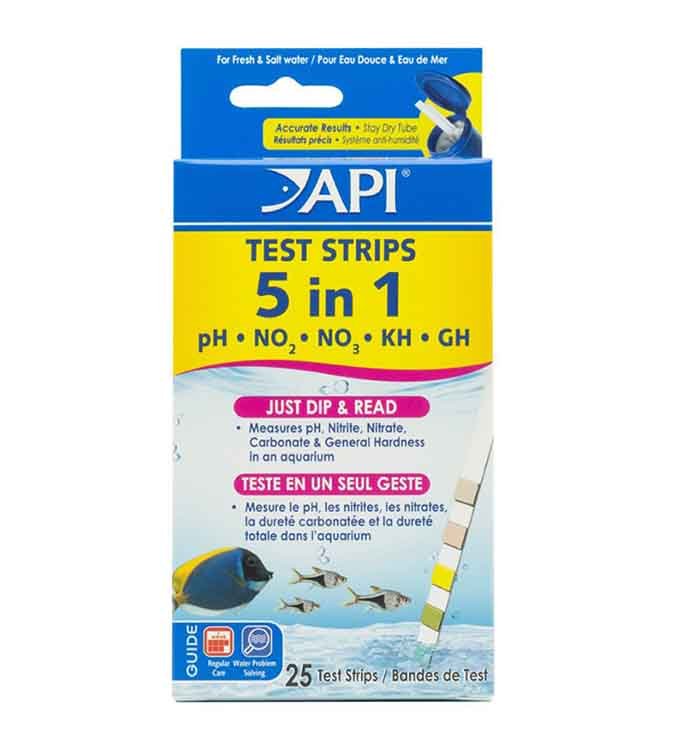
5-in-1 Aquarium Test Strips 25-Count Box
Water Hardness
These catfish species are adaptable and can tolerate a wide range of water hardness. To ensure their well-being, maintain a water hardness up to 20 dGH.
Temperature
Maintaining the right temperature is crucial for the Julii Cory Catfish. They thrive in tropical temperatures between 72 to 79 degrees Fahrenheit (22 to 26 degrees Celsius). Keeping the water within this range promotes their overall health and active behavior.
By maintaining the appropriate pH level, water hardness, and temperature, you can create an environment where your Julii Cory Catfish will thrive and display their best behavior.
Additionally, regular water testing and quality maintenance, including water changes, are vital for ensuring the well-being of your Julii Cory Catfish.
| Water Parameters | Ideal Range |
|---|---|
| pH Level | 6.5 – 7.8 |
| Water Hardness | Up to 20 dGH |
| Temperature | 72 – 79°F (22 – 26°C) |
Feeding Julii Cory Catfish
When it comes to the diet of Julii Cory Catfish, you’ll be happy to know that they are not picky eaters. These charming catfish are omnivorous and will readily consume a variety of foods.
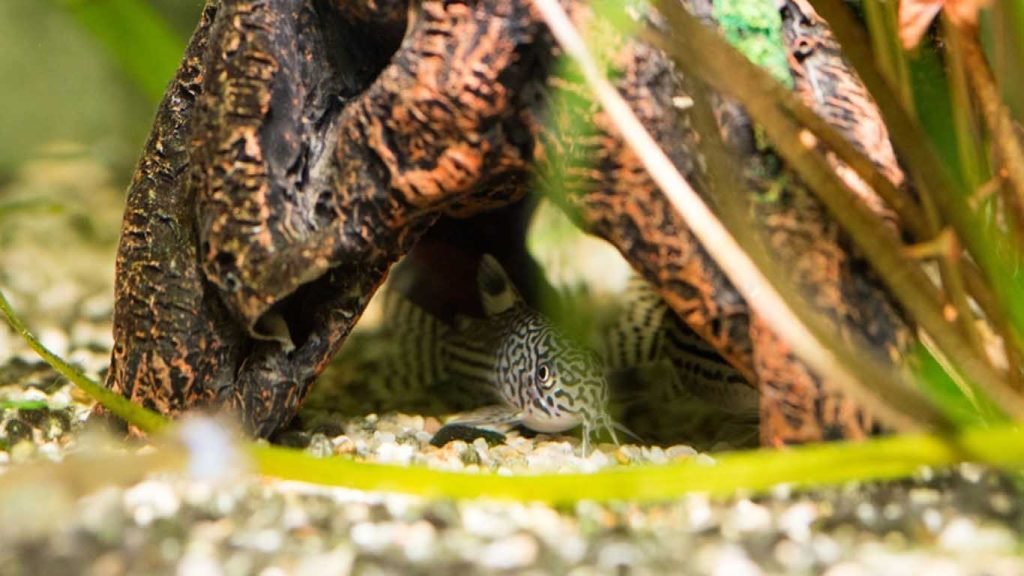
Their primary diet can consist of sinking tablets or pellets, which are specifically formulated to provide the necessary nutrients for their overall health and well-being. These sinking foods ensure that Julii Cory Catfish get their fair share of nutrition, even as bottom-dwellers.
Live foods can also be offered as occasional treats to provide a diverse diet for your fish. Julii Cory Catfish enjoy the thrill of chasing and capturing live prey, so introducing live foods can be an exciting and enriching experience for them.
Some suitable live foods that you can offer are:
- Brine shrimp
- Daphnia
- Bloodworms
It’s important to ensure that your Julii Cory Catfish receive enough food. Since they are bottom feeders, it’s possible for them to miss out on food if there isn’t enough reaching the tank floor. Regularly monitor their eating habits to ensure they are getting an adequate amount of food.
| Feeding Tips for Julii Cory Catfish |
|---|
| Offer sinking tablets or pellets as the primary diet |
| Provide live foods like brine shrimp, daphnia, and bloodworms as occasional treats |
| Monitor their eating habits to ensure they are receiving enough food |
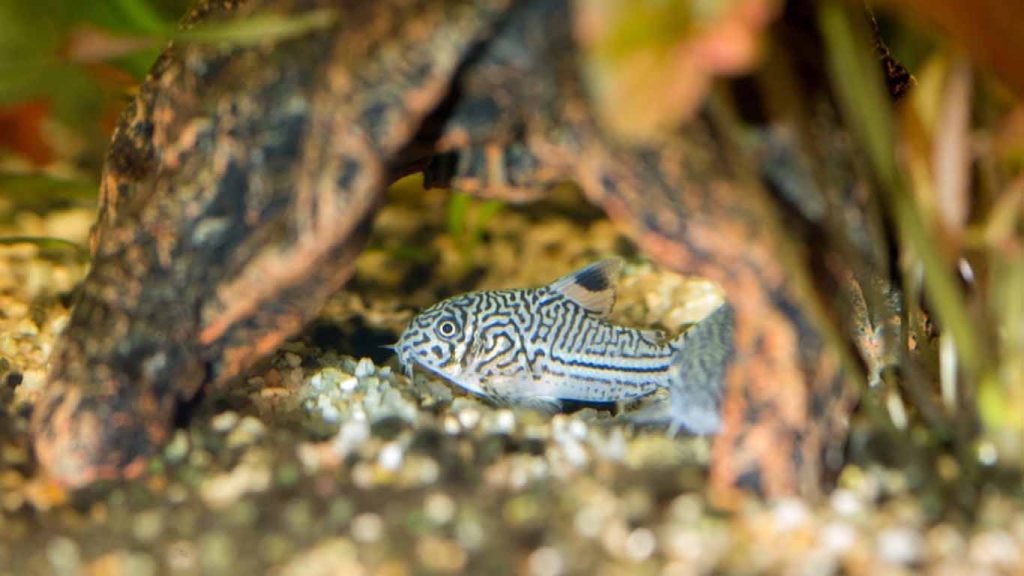
Tank Setup for Breeding Julii Cory Catfish
If you’re interested in breeding Julii Cory catfish, it’s essential to set up a separate tank specifically designed for their breeding needs. Creating the right environment in the breeding tank will encourage successful reproduction and the survival of the fry. Here’s what you need to know:
Tank Size and Substrate
A breeding tank for Julii Cory catfish should have a minimum size of 10 gallons, although a larger tank, like a 20-gallon long, is recommended. The larger tank size provides ample space for a group of corydoras and supports a stable breeding environment.
To mimic their natural habitat, use fine smooth gravel or sand as the substrate. This substrate allows the catfish to lay their eggs more easily without getting damaged or covered in debris.
Plant and Decoration
Plants and spawning mops are essential for Julii Cory catfish to deposit their eggs. Provide dense vegetation like Java moss, Cryptocoryne, or Anubias in the breeding tank. These plants create safe hiding places for the eggs and protect them from being eaten by adults or other tank mates.
Spawning mops, made from synthetic or natural materials, can also be used as an alternative to live plants. These mops mimic the appearance of natural spawning sites and provide an ideal surface for the adhesive eggs to attach to.

Marineland Bamboo 3 Feet, Décor For aquariums
Water Conditions
Julii Cory catfish prefer slightly acidic to neutral water conditions for breeding. Maintain a pH range between 6.5 and 7.0 to support their reproductive behavior. The water temperature should be around 75 degrees Fahrenheit (24 degrees Celsius), as this temperature range stimulates breeding activity.
Ensure the breeding tank has a good filtration system to maintain water quality and stability. Perform regular water changes to keep ammonia, nitrite, and nitrate levels in check, promoting a healthy breeding environment.
Remember to acclimate the adult Julii Cory catfish to the breeding tank gradually to minimize stress and encourage successful breeding. Provide hiding places and dim lighting to replicate their natural habitat and create a comfortable environment for the catfish to spawn.
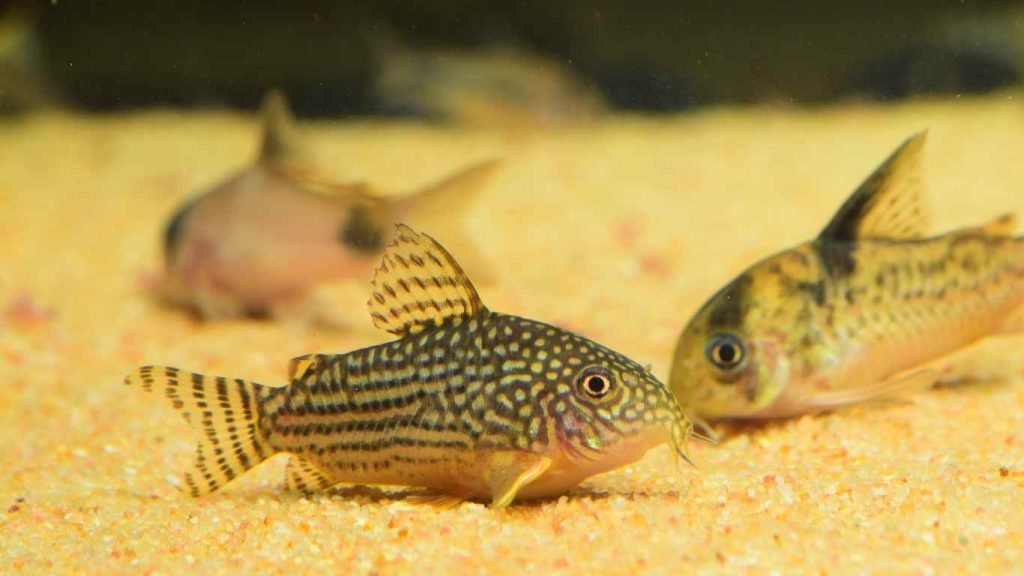
Breeding Behavior of Julii Cory Catfish
When it comes to breeding, Julii cory catfish have fascinating behaviors that ensure the continuation of their species. Spawning begins with increased activity and chasing between males and females, creating an interesting spectacle in your aquarium.
During the mating process, the male corydoras julii clasps onto the female’s barbels with his pectoral fins, forming a strong bond between the two. Meanwhile, the female forms a basket with her pelvic fins to hold the eggs securely. This unique behavior showcases the remarkable adaptations of these catfish.
Once the female is ready, she will deposit up to four eggs at a time into the basket created by her pelvic fins. This process continues until a total of 100 to 150 eggs are laid. This careful egg-laying process ensures that each egg receives proper care and attention from the parents.
“The breeding behavior of Julii cory catfish is truly a wonder to behold. The careful coordination between the male and female during spawning showcases their innate instincts and ensures the survival of their offspring.”
Observing the breeding behavior of Julii cory catfish can be a rewarding experience for any fishkeeper. It allows you to witness the beauty of nature and gain a deeper understanding of these captivating creatures.
Now that we’ve explored the breeding behavior of Julii cory catfish, let’s move on to the next section, where we’ll discuss the care and nurturing of the catfish eggs and fry.

Join Our GeoZoo Family
Subscribe to our Newsletter
Caring for Julii Cory Catfish Eggs and Fry
After successfully breeding your Julii Cory Catfish, it’s important to provide proper care for the eggs and fry to ensure their survival and healthy development. Here are some guidelines to follow:
Removing Adults
Once spawning is complete, it’s crucial to remove the adult Julii Cory Catfish from the breeding tank. This prevents them from consuming their own eggs, which can happen if not separated in time.
A Dedicated Aquarium
Set up a separate aquarium for the eggs and fry. This allows for better control of the environment and minimizes the risk of other tank inhabitants disturbing or harming the developing eggs and fry. Ensure the tank has gentle filtration to maintain water quality and is well-oxygenated to support the growing fry.
Preventing Fungal Infection
To prevent fungal infection, which can be detrimental to the eggs, add a few drops of methylene blue to the water. Methylene blue acts as an antifungal agent and helps reduce the chance of fungal growth on the eggs.

Hatching Time
Julii Cory Catfish eggs typically hatch within three to five days. During this period, it’s essential to monitor the water temperature, ensure stable water parameters, and maintain appropriate oxygen levels to promote successful hatching.
Feeding the Fry
Once the fry hatch, they will initially rely on their yolk sacs for nutrition. As the yolk sac depletes, you can begin feeding them. Suitable food options for Julii Cory Catfish fry include freshly hatched brine shrimp, micro-worms, or powdered fry food. These small and nutritious meals will support their growth and development.
Remember to provide regular feeding times and ensure the fry have ample opportunities to consume their food without competition from other tank inhabitants.
Keeping these care guidelines in mind will help increase the chance of successful breeding and the healthy growth of Julii Cory Catfish fry in your aquarium.
| Caring for Julii Cory Catfish Eggs and Fry |
|---|
| 1. Remove adult catfish from the breeding tank |
| 2. Set up a separate aquarium for the eggs and fry |
| 3. Add a few drops of methylene blue to prevent fungal infection |
| 4. Monitor water temperature and oxygen levels during hatching |
| 5. Feed fry with freshly hatched brine shrimp, micro-worms, or powdered fry food |
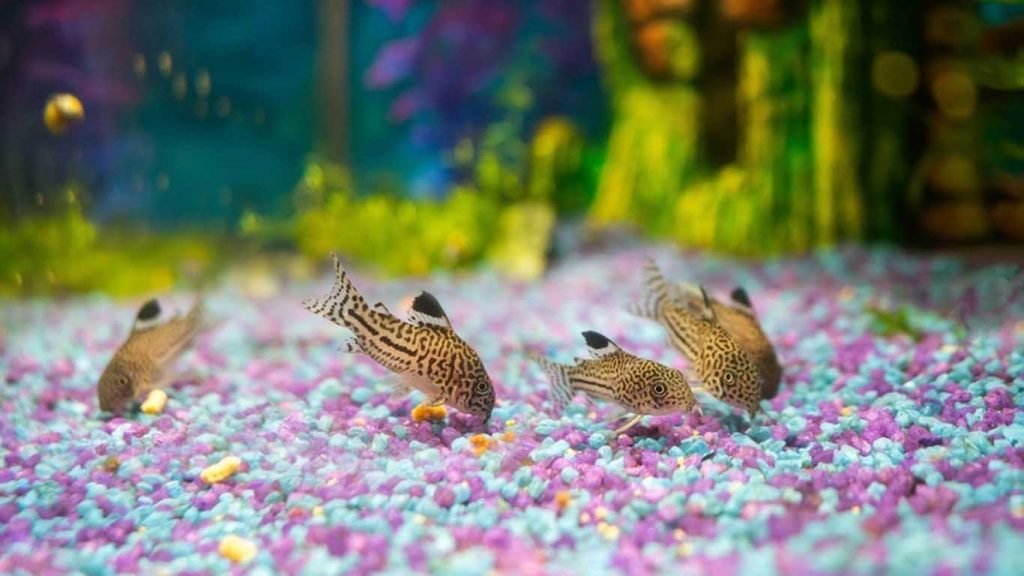
Compatibility of Julii Cory Catfish
Julii cory catfish are peaceful and get along well with other small, peaceful fish.
They can be kept with small tetras, rasboras, dwarf cichlids, and other small community fish.
It’s important to avoid any large or aggressive tank mates that may harm or eat the cory catfish.
| Compatible Tank Mates | Incompatible Tank Mates |
|---|---|
|
|
Note: The compatibility of tank mates can vary depending on the specific temperament of individual fish. Always monitor their behavior and make necessary adjustments to ensure a harmonious tank environment.
Care Tips for Julii Cory Catfish
Julii cory catfish are relatively easy to care for. By following these care tips, you can ensure the well-being and happiness of your julii cory catfish.
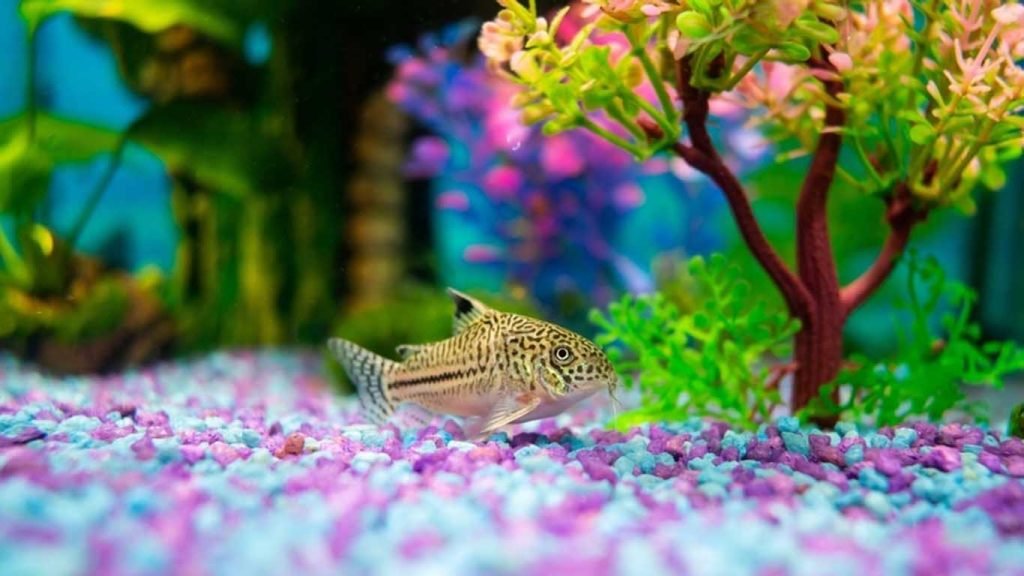
Tank Maintenance
To provide an optimal environment for your julii cory catfish, maintain a well-maintained tank with regular water changes and good filtration. Performing regular water tests for pH, ammonia, nitrite, and nitrate levels will help you keep track of its water quality. Julii cory catfish prefer slightly acidic to slightly alkaline water with a pH range of 6.5 to 7.8.
Hiding Places
Creating hiding places in the tank is essential for the well-being of your julii cory catfish. They enjoy exploring and hiding, so providing driftwood, caves, and live plants will make them feel secure. The plants can also serve as natural filtration, enhancing the overall health of the tank. Ensure the substrate is soft and sandy to mimic their natural habitat.
Diet and Feeding
Julii cory catfish are omnivorous and have a varied diet. Feed them a high-quality sinking pellet or tablet as their primary diet. Supplement their diet with frozen or live foods like brine shrimp, daphnia, and bloodworms. Feed them small amounts multiple times a day to prevent overeating and obesity.

Sinking Catfish Pellets with Shrimp
Monitoring Health
Regularly monitor your julii cory catfish for signs of poor health or malnutrition. Look out for changes in appetite, behavior, or physical appearance. Ensure they are not competing for food and that all individuals in the tank are getting enough to eat. If you notice any issues, consult a knowledgeable fish veterinarian.
| Aspect | Care Tips |
|---|---|
| Tank Maintenance | Maintain water quality with regular water changes and good filtration. |
| Hiding Places | Provide driftwood, caves, and live plants as hiding spots. |
| Diet and Feeding | Feed them a varied diet of sinking pellets, supplemented with live or frozen foods. |
| Monitoring Health | Regularly check for signs of poor health or malnutrition and seek professional advice if needed. |
By implementing these care tips, you can create a thriving and healthy environment for your julii cory catfish. With proper care, they will provide you with many years of enjoyment in your aquarium.

Common Misconceptions about Julii Cory Catfish
When it comes to julii cory catfish, there are often misconceptions that can confuse both beginners and experienced fishkeepers. One common misconception is the confusion between true julii cories (Corydoras julii) and false julii cories (Corydoras trilineatus).
True julii cories have distinct features that set them apart from their false counterparts. To properly differentiate between the two, it’s important to look for the following characteristics:
Smaller Bodies: True julii cories have smaller bodies compared to false julii cories. This difference in size can help you identify the correct species.
Shorter Heads: True julii cories have shorter heads than false julii cories. This distinction is particularly noticeable when comparing the two species side by side.
Distinct Spots on the Head: True julii cories have distinct spots on their heads, giving them a unique appearance. These spots are different from the reticulated pattern found on the heads of false julii cories.
By paying attention to these characteristics, you can ensure that you are correctly identifying and caring for your julii cory catfish.
Understanding the differences between true julii cories and false julii cories is crucial for a successful and rewarding aquarium experience. Avoid falling into the trap of purchasing mislabeled specimens by being informed about the unique features of each species. By providing the appropriate care and attention, you can enjoy the delightful presence of true julii cory catfish in your aquarium.
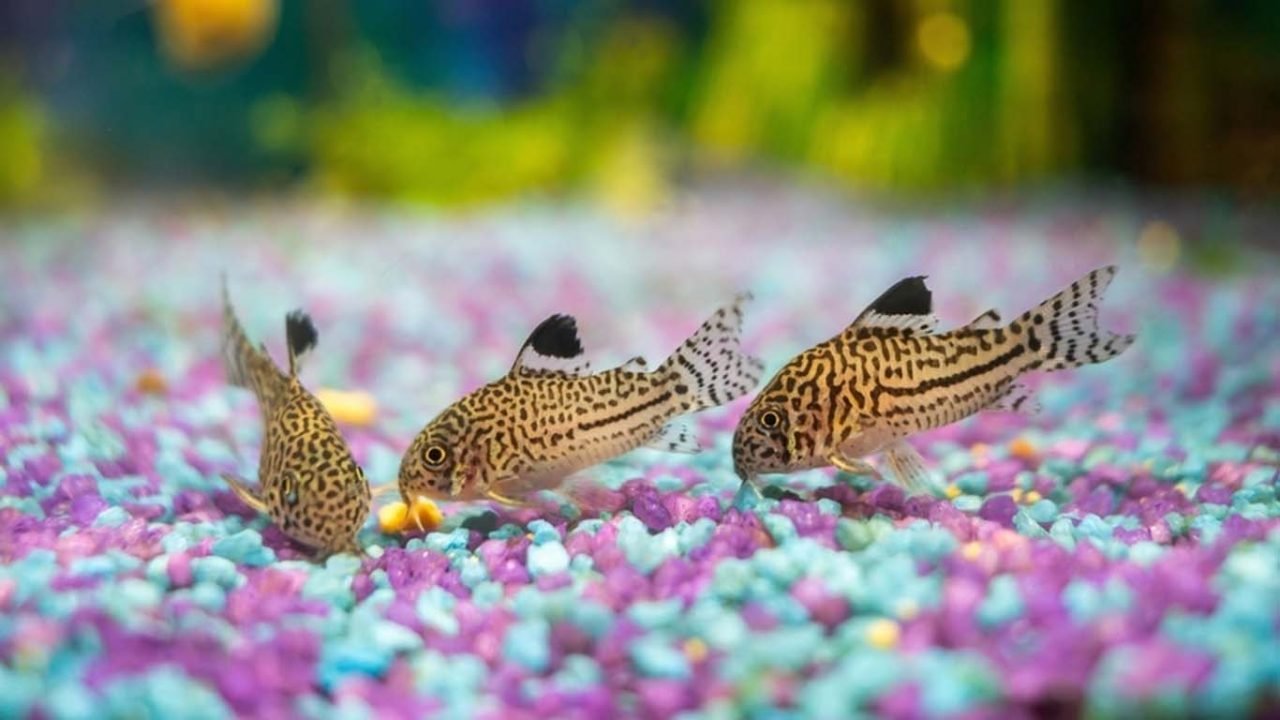
Join Our GeoZoo Family
Subscribe to our Newsletter
Final Remarks
Julii cory catfish can be a delightful addition to your aquarium, bringing charm and personality to your tank. With proper care and attention to their needs, these bottom-dwelling catfish can thrive and provide enjoyment for years to come.
To ensure the well-being of your julii cory catfish, it’s important to provide them with the right tank setup. A minimum tank size of 10 gallons is recommended, with a larger tank being preferable for a group of at least six corydoras. Choose tank mates wisely, opting for smaller, peaceful fish that will coexist harmoniously.
Water parameters should be monitored closely, with a slightly acidic to slightly alkaline pH range of 6.5 to 7.8 and a temperature of 72 to 79 degrees Fahrenheit. Maintain good water quality through regular water changes and proper filtration.
Feeding your julii cory catfish a varied diet is crucial for their health. Offer them sinking tablets or pellets as their primary diet and supplement with live foods like brine shrimp or bloodworms as treats. Take care to ensure enough food reaches the tank floor, as they are bottom feeders.
FAQ
What is a julii cory catfish?
A julii cory catfish, also known as a leopard catfish, is a popular bottom-dwelling species in the aquarium hobby. They have unique features like rotating eyes and “armored” scutes and spikes that make them attractive to fishkeepers.
How big do julii cory catfish grow?
Julii cory catfish can grow up to 2.5 inches in size.
What is the lifespan of julii cory catfish?
Julii cory catfish have a lifespan of around 5 years.
Can julii cory catfish breed in captivity?
Yes, julii cory catfish are an egg-laying species and can breed in captivity with the right conditions.
What tank size is suitable for julii cory catfish?
Julii cory catfish require a minimum tank size of 10 gallons, but it is recommended to have a larger tank of 20 gallons or more to accommodate a group of at least six catfish.
What are suitable tank mates for julii cory catfish?
Suitable tank mates for julii cory catfish include other small catfish and peaceful fish like tetras, danios, and rasboras.
What are the water parameters for julii cory catfish?
Julii cory catfish prefer slightly acidic to slightly alkaline water with a pH range of 6.5 to 7.8. They can tolerate a wide range of water hardness up to 20 dGH. The temperature should be kept between 72 to 79 degrees Fahrenheit (22 to 26 degrees Celsius).
What should I feed my julii cory catfish?
Julii cory catfish are omnivorous and can be fed sinking tablets or pellets as their primary diet. Live foods like brine shrimp, daphnia, and bloodworms can be offered as treats.
How do I set up a breeding tank for julii cory catfish?
A separate breeding tank with fine smooth gravel or sand substrate, plants, or spawning mops is recommended for breeding julii cory catfish.
What is the breeding behavior of julii cory catfish?
The breeding behavior of julii cory catfish involves increased activity and chasing between males and females. The male clasps onto the female’s barbels with his pectoral fins, and the female forms a basket with her pelvic fins to hold the eggs.
How do I care for julii cory catfish eggs and fry?
After spawning, the adults should be removed from the breeding tank to prevent them from eating the eggs. The eggs should be kept in a separate aquarium with gentle filtration and well-oxygenated water until they hatch, which takes around three to five days.
Can julii cory catfish live with other fish?
Yes, julii cory catfish are peaceful and can be kept with other small, peaceful fish like tetras, rasboras, and dwarf cichlids.
What are some care tips for julii cory catfish?
Some care tips for julii cory catfish include providing a well-maintained tank with regular water changes and good filtration, providing hiding places, a soft substrate, and ensuring they receive a varied diet.
How can I differentiate true julii cory catfish from similar species?
True julii cory catfish have smaller bodies, shorter heads, and distinct spots on their heads compared to the reticulated pattern of false julii cory catfish.
What is the conclusion about julii cory catfish care?
Julii cory catfish are charming bottom-dwelling catfish that make a great addition to a community aquarium. With proper care and the right tank setup, they can thrive and add personality to your tank.

